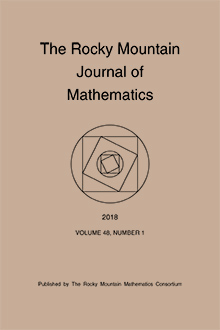Abstract
Consider the diophantine equation in positive integers and . Each side of the equation is a product of two terms of a given binary recurrence. We prove that the only solution to the title equation is . The main novelty of our result is that we allow products of two terms on both sides.
Citation
Kálmán Liptai. László Németh. Gökhan Soydan. László Szalay. "Resolution of the equation $(3^{x_1}-1)(3^{x_2}-1)=(5^{y_1}-1)(5^{y_2}-1)$." Rocky Mountain J. Math. 50 (4) 1425 - 1433, August 2020. https://doi.org/10.1216/rmj.2020.50.1425
Information





